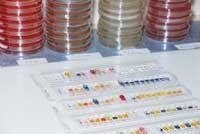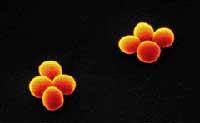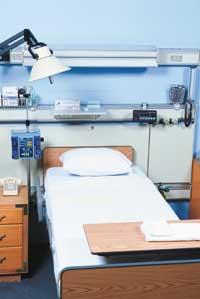Resistance to antibiotics can be reversible
2001/03/20 Galarraga Aiestaran, Ana - Elhuyar Zientzia

Royer Inouye and his team have worked with infectious bacteria Enterococcus faecalis. In the bacterial culture an additional copy of the gene that gave resistance to the antibiotic bancomycin was introduced. The copy managed to cancel the ability to combat bancomycin of the natural gene. Thanks to this transformation, the antibiotic easily kills the bacteria.
In fact, this bacterium resistant to bancomycin is among the ones that cause the most infections in the hospitals of the United States and increasingly harms Europeans. The infection can sometimes be fatal and control its spread is very difficult, since there is no alternative to bancomycin.
Bacteria need some proteins to be resistant to antibiotics and researchers have used an additional copy of the gene that encodes them. The parts of the harness produced by the gene as an additional copy are united and deactivated by the respiratory pattern of the gene that encodes the resistance of the bacteria. However, there are many drawbacks to bring these genes to the bacteria of the human body. For example, even if we take a pill to remove the bacteria present in the human intestine, it would not affect those found in the skin, blood, or wounds. In addition, they do not know how to introduce the gene into the bacteria located in the hospitals.
Despite the drawbacks, they continue to investigate alternatives to microorganisms such as the use of resistant antibacterial virus (phages). The specially designed phages have managed to eliminate Escherichia coli in laboratory animals. If bacteria manage to develop resistance to phages, the additional copy of the genes that give them resistance could be included within the phages.
Researchers continue to work, and as bacteria become more resistant, researchers are also opening new paths to try to get the most effective way to fight.

Gai honi buruzko eduki gehiago
Elhuyarrek garatutako teknologia






